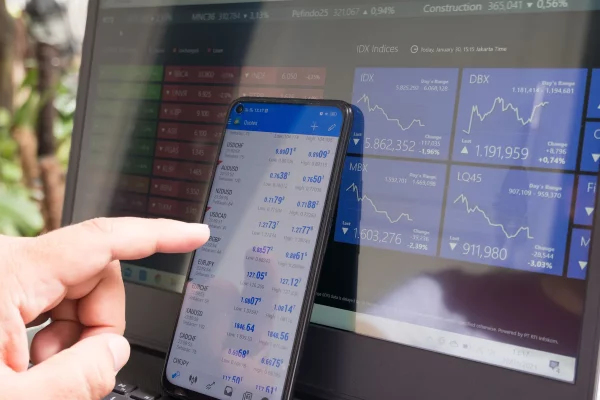
You can trade the world’s currencies on the foreign exchange (forex) market. Forex is one of the world’s most actively traded financial instrument, and the market oversees around $6.6 trillion transactions each day.
Its popularity can be attributed to the profit-making potential that it provides investors with, since traders can take advantage of price movements in order to make gains on their capital. The volatile nature of the market causes prices to fluctuate all of the time, and although you can take advantage of this to profit, it also puts you at risk of making losses on your position.
Because of the fact that your capital is at risk when you invest in the forex market, successful trade will require research, an understanding of fundamental and technical factors, and an ability to act quickly and effectively when situations change.
To help you to conduct successful trades in the forex market, you might also want to open a position with an online CFD trading platform. This will allow you to trade on some of the world’s most actively traded currencies, without owning the underlying asset itself. You’ll be trading on the value of contracts, rather than directly on the instrument itself.
To gain a better understanding of forex trading, so that you feel confident enough to open a position for yourself, we’ll guide you through, looking at the past and present of the market.
And whilst you’re here, why not enhance profitability and your trading experience in the future by visiting bitcoins code, the official cryptocurrency trading software. Because chances are that you’re also into crypto and looking for alternative routes to profitability.
The history of forex
Forex trading is nothing new, and the first recorded currency exchange is believed to have taken place way back in 259BC, in ancient Egypt. Back then, gold and silver represented the universal currency, and the value of these coins made from precious metals was determined by their weight. In fact, 2500 years ago, gold and silver were still used universally, enabling individuals to buy and sell commodities.
The 20th century was the most transformative century for forex trading. In 1944 the Bretton Woods Agreementwas signed, allowing currencies to be exchanged within a pre-determined range.
Moving forward to 1971, a ‘free floating’ system was implemented and this meant countries could decide their own exchange rates. It was at this point that the forex market that we know today was born, and individuals could invest in the world’s currency pairs, with the aim of making gains on their investments.
How do you trade in forex?
Nowadays, in the forex market, currencies are trading against one another in pairs — known as currency pairs. The price is determined by directly comparing one currency against another. For example, in the case of British sterling against the US dollar (GBP/USD), the value of the pound is based upon how many dollars you can purchase with one pound. In this pairing, sterling represents the base currency and the dollar acts as the counter currency.
When you compare the base and counter currency, you can ascertain whether the currencies are likely to rise or fall against one another, and base your position in the market upon your predications.
If you believe that the base currency will rise against the counter, you would assume a bullish position and buy. In the case of the base currency falling against the counter, however, you would take a bearish position, selling the currency pair.
What is leverage and how can you benefit from it?
If you’re wanting to acquire a significant level of exposure in the forex market without having to deposit large amounts of your own capital, you could take advantage of leverage. This type of trading enables you to provide a fraction of the value of the whole trade and borrow the remaining capital from a forex broker.
Of course, with larger positions in the market comes greater risk of making losses, but could also provide you with the opportunity to make larger profits.
Forex trading through CFDs
CFD platforms are an attractive door to the forex market, since you could trade on some of the world’s most popular currency pairs without owning the underlying asset itself. Instead, you will draw up a contract with an investment broker, agreeing to exchange the difference between the opening and closing trade prices, once the contract period has ended. This means that you’ll be trading on the value of the contract, rather than the value of the currency pair.
